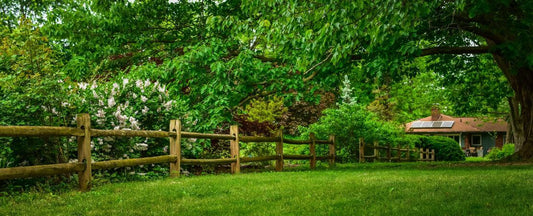Xeriscape Ideas and Plants to Conserve Water in the Garden

Xeriscaping: Dealing with Drought
In recent years, the United States has witnessed a significant shift towards xeriscape landscaping, driven by erratic weather patterns and the increasing prevalence of drought conditions. This trend underscores the importance of understanding what is xeriscaping: a sustainable gardening practice that minimizes water use through thoughtful landscape design and the selection of drought-resistant plants. As homeowners explore xeriscape ideas to create vibrant, water-wise gardens, the movement towards xeriscaping becomes more than a trend—it's a necessary shift in how we approach gardening in a changing climate.
One practical step towards xeriscaping is the installation of a rain barrel to collect runoff water, a simple yet effective method to reduce water bills and conserve precious resources. By adding a thick layer of mulch around plants, gardeners can significantly enhance moisture retention, further reducing the need for supplemental watering. The move away from traditional grass lawns to natural areas filled with native plants, rock gardens, and drought-tolerant perennials embodies the principles of xeriscaping, offering an aesthetically pleasing and environmentally responsible alternative to water-intensive landscaping.
Xeriscape landscaping goes beyond just choosing drought-resistant plants; it encompasses a holistic approach to garden design. This includes optimizing soil conditions with appropriate amendments, implementing efficient irrigation systems, and carefully planning the garden layout to maximize water conservation. By adopting xeriscape landscaping ideas, gardeners can create stunning outdoor spaces that thrive with minimal water input, thereby contributing to the sustainability of our environment.
Incorporating xeriscape ideas into your garden design not only addresses the challenge of drought but also transforms your outdoor space into a testament to sustainable beauty. From the selection of native plants to the strategic use of landscape design elements, xeriscaping offers a path to a resilient, low-maintenance garden that delights year after year. Embracing these practices can lead to significant water savings, reduced maintenance, and a beautiful, drought-resistant garden.
Many slower-growing perennials need much less water and can give you just as much beauty. There are also a huge variety of drought-tolerant plants available that, once established, will do wonderfully with almost no irrigation.
Plants That Resist Drought
Preserve nature's resources while enjoying fantastic flowers and foliage by planting drought tolerant trees, shrubs, and perennials.
However, adopting xeriscape landscaping goes beyond simply choosing the right type of plants. It involves a comprehensive overhaul of your garden's design, from selecting special grasses and creating gradients for optimal water flow to balancing sun exposure and shade. With principles of xeriscaping, including soil amendments, reducing water usage through efficient irrigation systems, and garden design tailored to conserve moisture, even beginners can achieve significant water savings in their front yard or backyard.
By integrating xeriscape strategies into your landscape design, your garden is better equipped to withstand drought conditions and also contribute to preserving nature's resources. If you're planning a new garden design or looking to retrofit your existing space with xeriscape landscaping ideas, the journey towards a water-wise garden is rewarding and environmentally responsible.



